If ground dwelling, I use a Snugpack Stratosphere hooped bivvy with mozzy netting.
But at 1.4 Kg it's 0.4 Kg heavier than a Laserlite tent!
Jim
If ground dwelling, I use a Snugpack Stratosphere hooped bivvy with mozzy netting.
If you are switching to a tarp to save weight, don't bother. When you include the tarp, bivi, ropes, etc, you will see that there are tents out there that weigh as much or less than the tarp set up. The reason why I use a tarp is that it is a different experience. You are much more "in the woods" than with a tent. Also, if you have a long day of rain, it is much better to spend it under a tarp than in a tent-a lot more room to do things. That being said, you do have to put up with the insects, dirt, and all the other fun things that come along with being on bare ground.
But at 1.4 Kg it's 0.4 Kg heavier than a Laserlite tent!
Jim
Thank you for all the advice. Definitely decided on the tarp and bivi route for my next purchase actually I've now got a DD tarp on order along with one of the alpkit hunka bivis.
I might see if I can sell my TNF Tadpole and get a MSR Hubba HP for up in Scotland though, it's only after seeing the pictures on this site that made me lust after one! Alas, this site is dangerous!
If you are switching to a tarp to save weight, don't bother. When you include the tarp, bivi, ropes, etc, you will see that there are tents out there that weigh as much or less than the tarp set up. The reason why I use a tarp is that it is a different experience. You are much more "in the woods" than with a tent. Also, if you have a long day of rain, it is much better to spend it under a tarp than in a tent-a lot more room to do things. That being said, you do have to put up with the insects, dirt, and all the other fun things that come along with being on bare ground.
I have the same mix - DD Tarp and Alpkit Bivi so I'd like to hear how you get on.
The really light tents are usually fairly expensive compared to the cost of a tarp/bivi but I'd agree about it being nice to not wake up with spiders crawling over your face,
I don't have a DD tarp, only my own home made one, but have used it a few times along with the Alpkit Hunka bivi bag, no problems at all, left the sleeping bag in the bivi rolled out all day, sometime by the time I came to hit the hay, there was lots of dew / condensation on the top of the bag, but inside was bone dry. Woke up in the mornings dry too, so no complaints here. Haven't used it during colder days though, but I suspect it will be fine judging by other peoples comments on the Alpkit site, and here.
Was the hunka not super warm since it has no zip? I thought that the mummy bag inside the bivi would be boiling.
general knowledge (like where to hide from midges!).
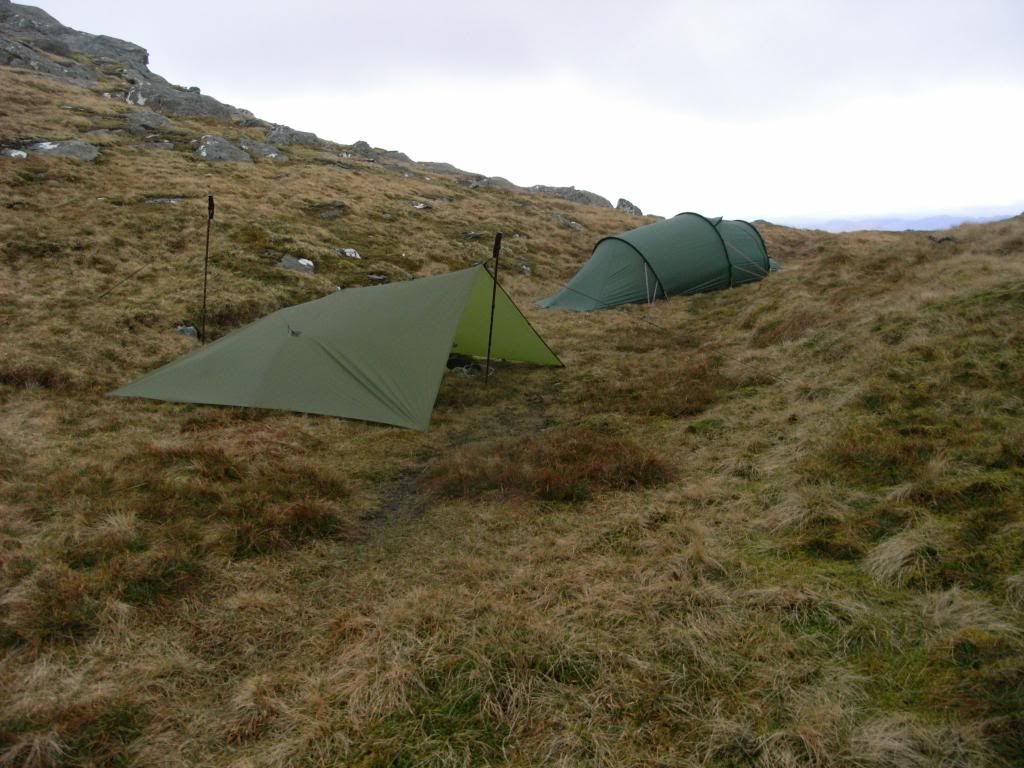
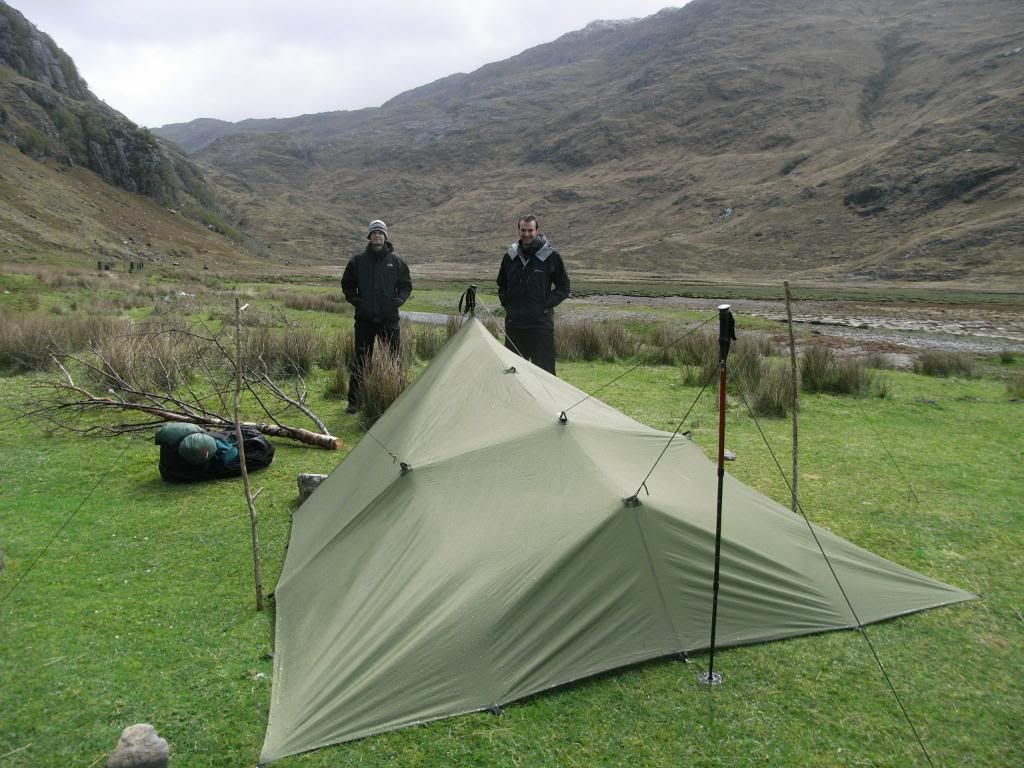
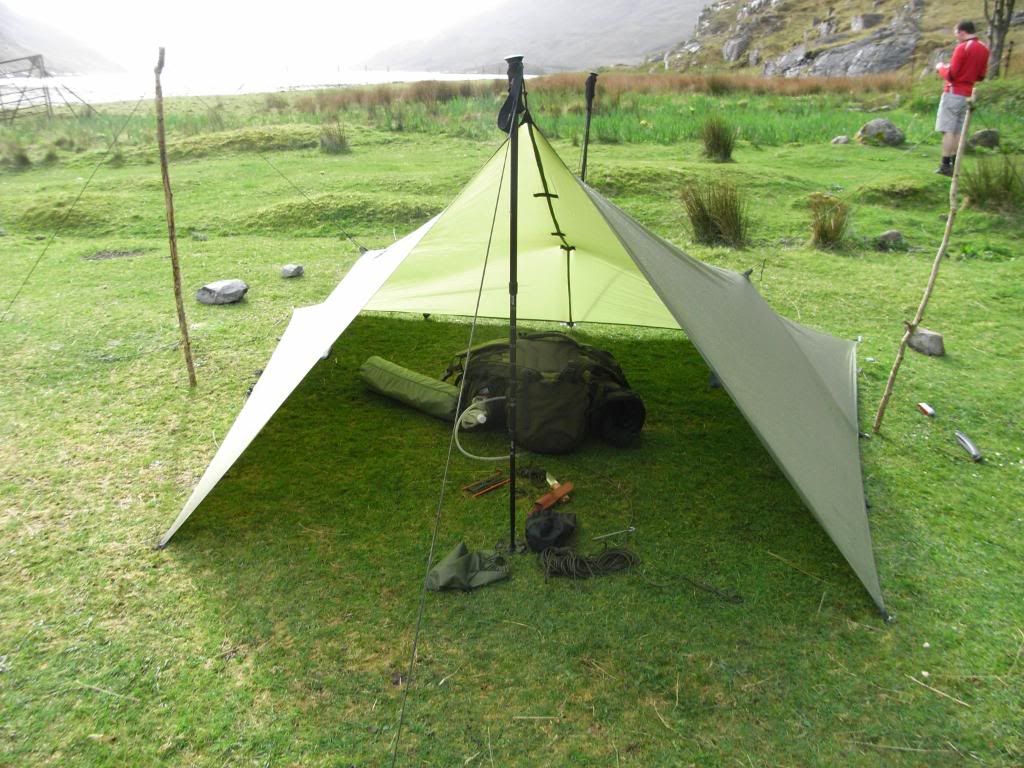
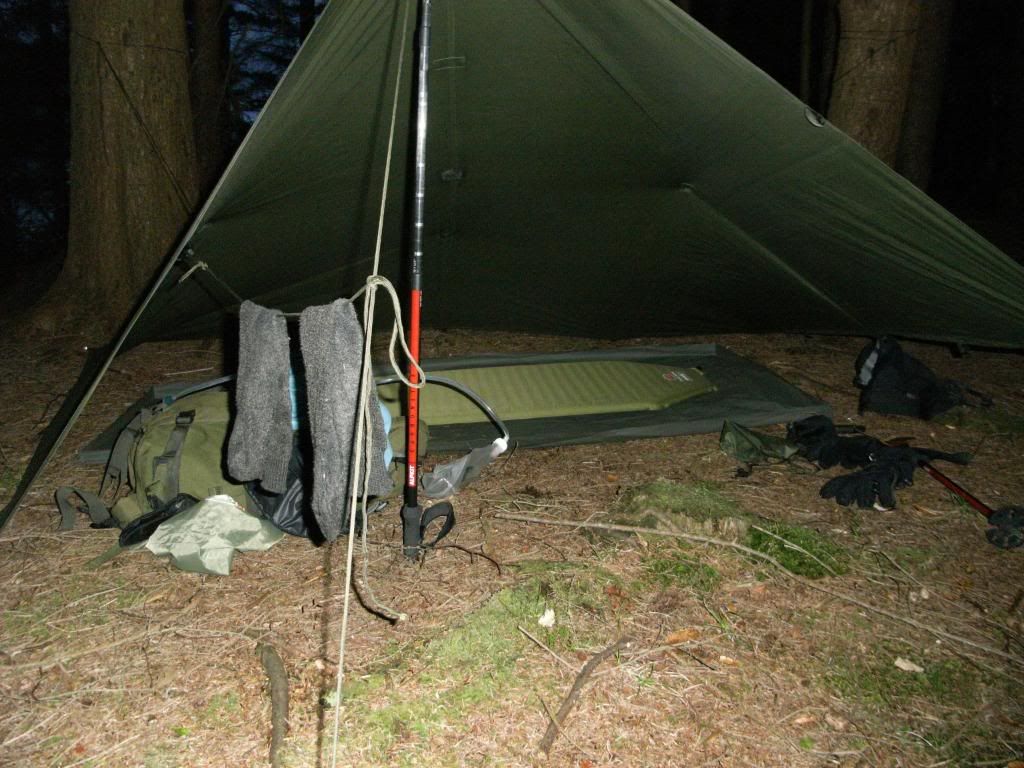
I think the Tarp v Tent question depends a lot on which tarp v which tent, and also on the type of terrain and weather. I have used different tents and different tarps, and to some extent it's horses for courses. The lightweight single person tents available at the lower price ranges do tend to be a bit cramped inside, if they are bigger they tend to be a lot heavier or else very expensive. The Hilleberg Akto seems to be well regarded and have a fair bit of room, but you pay for it!
The main advantage of the tent over the tarp is the fact that you can pitch virtually anywhere and have somewhere dry for the night, free from bugs. The main advantages of the tarp are flexibility, and extra space for a given weight. The downside is that you have to be a lot more careful about where and how you pitch!
I went up to Knoydart in the spring with some friends who borrowed my Hilleberg Nallo 2 GT. They like the idea of being able to seal themselves off from the weather (which was wet and wild), and the Nallo has a huge porch. Weight is 2.6 kg, or 1.3 kg each. I, on the other hand prefer to get the full on open air experience, so I took a 2.5x3m Kathmandu tarp. I had previously used a 1.8x2.5m army one, but felt a little bit exposed up on the mountains. The weight of my setup was 595g for the tarp, plus 450g for two carbon fibre walking poles, plus 300g for a homemade bathtub groundsheet, plus about 80g worth of pegs, total 1425g. However, I also carry a full length midge net (not used this time as it was too early for midges) which adds another 160g, so I ended up carrying more weight than my friends. I don't possess a bivvy bag.
In terms of the experience on the hill, I was fine in my tarp in some pretty nasty weather, but it did require a lot of careful planning to make sure that I had judged the wind direction right, and picked the right spot to pitch, and the tarp took a good deal longer to pitch than my Hilleberg. On the plus side, I got to experience the mountains, while my friends were sealed inside a nylon environment, and I had a lot more room to spread out and relax.
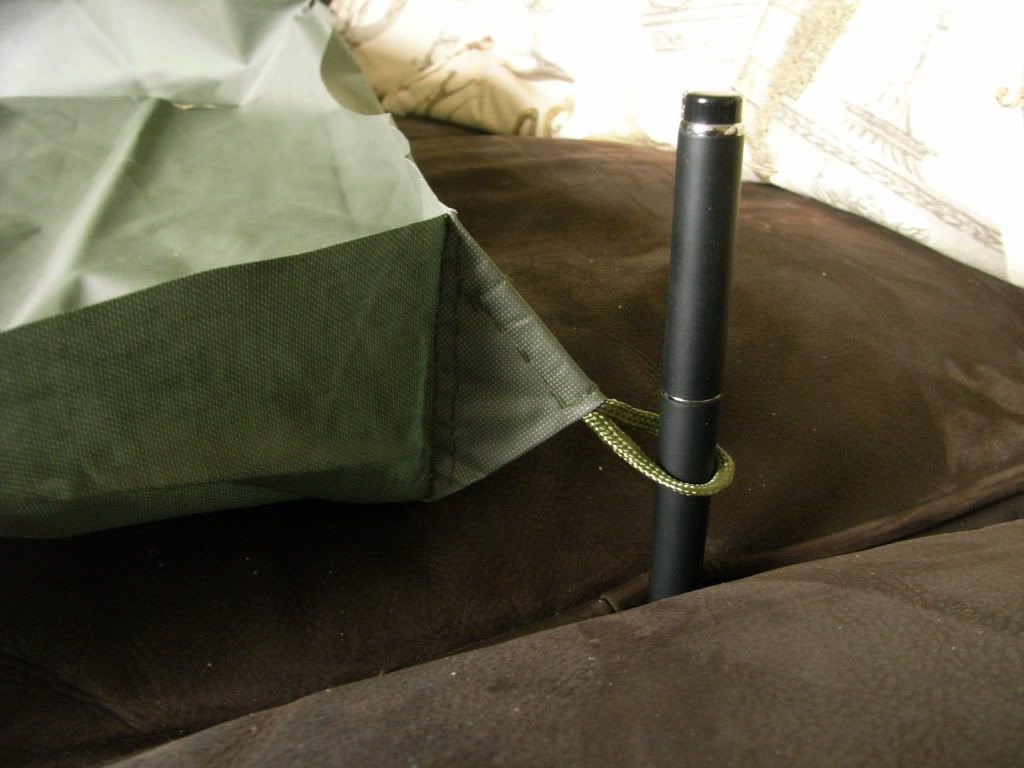
Johnno, the bathtub groundsheet was actually made from an army surplus IPK kit. It cost me £5, which gets you a sheet of stiff very strong waterproof material, some cord and aluminium stakes. The material can be cut with scissors without having to seal or hem the edge, as it doesn't fray. I cut mine down to about the size of a single bed. Then fold each corner in half and sew a straight seam at 90 degrees to the raw edges, about 10 cm in. This gives you a triangular shape at each corner, and creates the "bathtub" shape in the groundsheet. However, the edges need to be tensioned to make the sides stand up. To do this fold each triangle in half again, and sew to create a fairly stiff "tab" on each corner. Then sew a small loop of cord into each tab. The whole thing took me about an hour to do, sewing by hand. I bought some small aluminium pegs to peg the corners out. The only thing I might do differently next time would be to add a little stiffening wire into the corner tabs, to aid rigidity, but to be honest it doesn't really need it!
I have to say that I agree with you on the weight point. If I wasn't taking a tarp I would probably want a two man tent just for me! I can't stand being too squashed, especially in bad weather. The walking poles are also useful in their own right, so for someone who would be taking them anyway it is "free" weight.
Pierre, I used a space blanket at first (80g), but found it too flimsy, it ripped after a few days. I use a down bag too! My bag has a good DWR though, so a bit of spray is not a problem, probably not as much as condesation in a bivvy bag.
